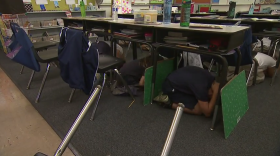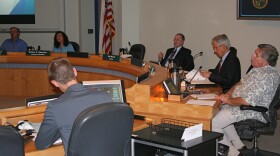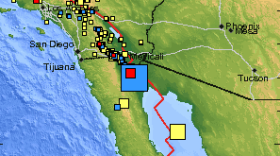-
New research suggests oil drilling decades ago may have triggered earthquakes in the Los Angeles region, including the 1933 quake that killed more than 100 people.
-
Thousands of San Diegans dropped, covered and held on at 10:20 a.m. Thursday during the Great California Shakeout earthquake drill.
-
The newly discovered Salton Trough Fault could be as long as 40 kilometers (about 25 miles), long enough to produce a large-magnitude quake.
-
The U.S. Geological Survey reported two earthquakes, magnitudes 3.4 and 3.0, a week after a series of small jolts in the same area near the San Andreas fault.
-
Californians will begin getting warnings of impending earthquakes through their cellphones, radios and other devices within the next year or two as the state ramps up a lifesaving early warning system.
-
The first was a 3.2-magnitude temblor that hit at 6:14 a.m. near Niland. The second measured 3.0 and struck at 7:33 a.m., and the third had a magnitude of 3.1 and came at 8:48 a.m.
-
A strong earthquake struck in southern Mexico on Monday afternoon, but there were no immediate reports of injuries or serious damage.
-
For years, she has been the scientist a rattled Southern California has turned to when the earth shakes, explaining magnitudes, faults and other details.
-
San Diego researchers are among those testing materials that could help make existing buildings more resistant to earthquakes.
-
The app taps into smartphone accelerometers — sensors commonly used to detect movement and orient screens based on how users hold their phones — to pick up on earthquake tremors.
RELATED STORIES
-
-
KPBS Midday Edition
-
-
-
KPBS Midday Edition
-
-
-
-
Sign up for our newsletters!
Keep up with all the latest news, arts and culture, and TV highlights from KPBS.
- San Diego proposes keeping low-density housing near Clairemont trolley stops
- San Diego Zoo mural honors 3 beloved animals lost in 1 week
- Buried audit found major problems at San Diego County animal shelters. Issues still persist
- Activists want state commission to consider decertifying SDPD chief
- Hundreds still without power in the Imperial Valley after Monday's monsoon storms























